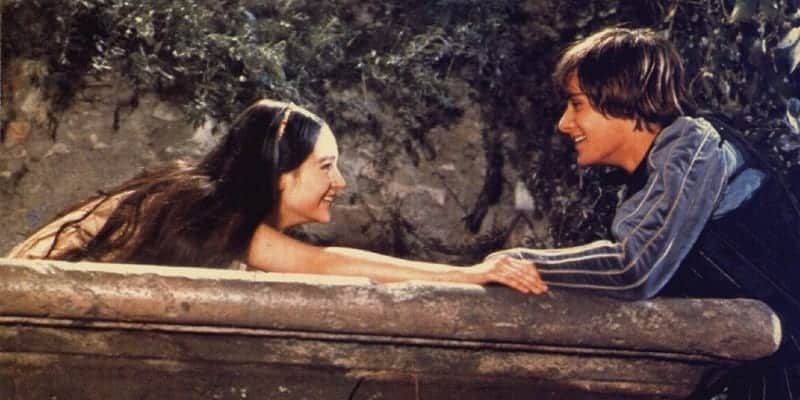This article discusses key Shakespeare themes, and how he used various themes in his plays.
You often hear this kind of question about Shakespeare and his works: ‘What is Macbeth about?’
It’s very hard to answer this question succinctly. If I tell you the story of Macbeth does that answer the question? The fact is that it’s about many things. Some of them are ambition, what it means to be a man, conflict, corruption, transformation, order and disorder, loyalty, appearance and reality, guilt, sin and retribution, good and evil, and many more. It doesn’t matter how many times you read or see the play, every time you do you will find things in it that you didn’t see before. (In fact we’ve had a go at writing up the key macbeth themes here.) The same is true of all Shakespeare’s plays.
Themes are the ideas that Shakespeare explores dramatically through the experience of his characters, and they define the play. There are common themes in all of the plays, such as appearance and reality, but in addition to those, each play explores its own issues, which are dramatised in the language, the actions of the characters and in the setting.
Macbeth Themes
Macbeth explores several ideas or key themes throughout the play. Here’s our take on four of the key themes in Macbeth.
Romeo and Juliet Themes
Whilst the play features the meeting and falling in love of the two main protagonists, to say that love is a theme of Romeo and Juliet is an oversimplification.
Hamlet Themes
Shakespeare’s Hamlet is a revenge tragedy but, being by the mature Shakespeare, it is very much more than that. Read our take on the Hamlet themes.
Theme: Ambition
How does the theme of ambition weave through Shakespeare’s plays? In 21st Century Western culture ambition is generally considered…
Theme: Appearance & Reality
The idea that people, events and things in our world are often not what they seem is at the heart of many of Shakespeare plays…
Theme: Betrayal
Perhaps the most celebrated expression of betrayal in Western culture is Julius Caesar’s “et tu Brute.” Stabbed by each…
Theme: Conflict
Conflict in drama is not so much a theme as a fact. The word ‘drama’ is a Greek word, meaning ‘action,’ and it is the action of a play…
Theme: Corruption
Shakespeare’s depiction of human nature through all his plays reveals the corruption that infects human beings. Corruption appears…
Theme: Deception
Deception is essential to Shakespeare’s dramatic works in that it governs the relationships between the characters and drives the plots….
Theme: Good & Evil
During the time that Shakespeare and his contemporary playwrights were writing their plays beliefs about good and evil were changing….
Theme: Hatred
Hatred is one of the most powerful emotions, and a great driver of action in drama. Unlike some of the other emotional forces….
Theme: Order & Disorder
Almost all of Shakespeare’s plays begin with a state of order or stability, which gives way to disorder or confusion…
Theme: Revenge
Revenge in Elizabethan and Jacobean drama is more of a genre than a theme, as it generally applies to plays that are specifically about revenge…
Theme: Suffering
Shakespeare’s plays depict the range of human suffering. Although written four hundred years ago they demonstrate the very same ways in which…
Theme: Transformation
The most visible manifestation of transformation in the plays stems from Shakespeare’s pre- eminence in creating inner lives for his characters…
Sometimes Shakespeare will repeat individual theme words throughout the play. In Macbeth the most frequent word is ‘blood’. ‘Blood’ is a word with a multitude of meanings. At its most dramatic it refers to violence, something that’s very prominent in the play. There is a lot of killing, a lot of blood seen, and the characters use the word in everything they say. It’s here that Shakespeare invents the word ‘bloody’, turning ‘blood’ into an adjective for the first time. ‘Blood’ also refers to family, as in blood relatives. Macbeth is the cousin of Duncan, whom he murders. Immediately after the murder the word ‘blood’ is dramatised by the indelible blood on his hands. Blood also suggests such things as courage, youth, and anger.
King Lear is a play that explores the concept of possession and identity. Lear is stripped of both. The word ‘nothing’ ripples through the text. Also in King Lear, there is a great deal of cruelty. There is also a great deal of tenderness and healing. Shakespeare repeats the word ‘hands’ throughout. The human hand is used both for cruelty and tenderness and we see images of physical cruelty with hands ripping and tearing, clawing and wounding. Regan, for example, rips Gloucester’s eyes out with her hands. We also see hands raising someone up, blessing and stroking. ‘Hands’ is used for expressing both themes and, in addition, the theme of good versus evil.
In some plays Shakespeare uses a particular language device throughout. In Measure for Measure things are being balanced all the time. One of the main themes in the play is justice, and so we see everything being balanced against something else, reflecting that theme.
Recurring images is another device Shakespeare uses. In Romeo and Juliet there are recurring images that contrast light and darkness, reflecting young love doomed to death. Read more about Romeo and Juliet themes.
It’s not possible to say definitively what Shakespeare’s themes are, because each generation finds something that speaks to their generation. In previous centuries when European countries invaded and ruthlessly killed or exploited the inhabitants of the places they colonised that was universally regarded as acceptable. We don’t accept that anymore and politicians now apologise for it. Scholars of the present generation now look at The Tempest with new eyes. Instead of Caliban being only a horrible and detestable monster, we see him also as the dispossessed and enslaved inhabitant of the island that belongs to him. We now take the question ‘who does this island belong to?’ seriously, which previous generations did not. The generations that follow us will find things in Shakespeare’s plays that concern them deeply but of which we are not aware.
It’s possible to see common themes that appear in all the plays. The four most prominent are: appearance and reality; change; order and disorder; and conflict. Those were matters that deeply affected Shakespeare as he walked about and observed the world around him. In his declining years he became interested in the refreshment that the countryside brings as an antidote to the evils and corruption of city life. When he became the grandfather of a little girl he became interested in the redeeming effect that the youngest generation has on the oldest and we see that in plays like The Tempest, the Winter’s Tale and Pericles, where there are all young girls who bring about the redemption of the corruption perpetrated by the old, worn-out generation, still pursuing their greedy ambitions.



















Please add the themes of Midsummer’s night’s dream also
so um this wasnt really helpful imo